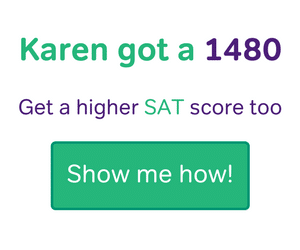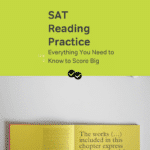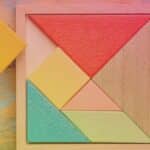Heads up if you haven’t heard: the new SAT’s Reading section is all about real world content. The SAT wants to be more relevant and applicable to your future college career. This means including reading materials you might actually, well, read. Anything from historical documents or classic literature you’ve read in school, to contemporary political analysis and reports on scientific research are fair game. Before you shout at me that this isn’t a science or history test, take a deep breath! The SAT Reading section is still testing you on reading comprehension. All questions will be based on your ability to read and interpret passages across a variety of reading styles. No math equations or historical date memorization required.
Now that you know you’ll be reading real passages, you can gear up and read the types of passages that will be on the test! The great thing about the SAT using these types of materials is that they are readily available, even outside SAT study books. So, we’ve compiled this handy list of common types of passages to get you started.
So You Literary, Huh?
For you Mr. Darcy fans out there, I’ve got good news. Our beloved Jane Austen, or similar period fiction writers, like Mary Shelley and Charles Dickens, is likely to appear in excerpt. You may also encounter essays about a specific work of fiction, like Joyce Carol Oates’ introduction to an edition of Charlotte Bronte’s Jane Eyre.

Science-Tastic!
The SAT includes Science News passages all. the. time. These are often fairly short articles, so you can expect to see an entire article on the SAT. Sometimes, you may see two excerpts discussing similar topics appear together on the SAT, with a few questions asking you to compare the two passages.
Four Score and Seven Documents
If you’ve been paying attention in history class, you’ll probably be familiar with some of these passages. As part of the “great global conversation” the new SAT is adding in documents that shaped US history. These can include founding documents like the Declaration of Independence, narratives from Frederick Douglass, speeches from Martin Luther King, Jr, and important presidential addresses.
Contemporary Commentary
Like the Science News pieces, you may also see excerpts from news articles side-by-side. These are often political pieces, but don’t be surprised if you encounter critical analysis of a major world event or cultural phenomenon. Either way, you can still expect the SAT to ask you questions about the author’s purpose, tone, and language.
These examples will get you started, but it’s definitely a good idea to browse around the Science News website or read a few articles from the New York Times. The more familiar you are with a variety of writing styles and subjects, the more comfortable you will be on test day. Since the SAT is now using real pieces of writing, you have the advantage. Stay up to date with current events news, do your history homework, and crack open a classic novel. You never know what might show up on the exam!
For more on how to master this section, check out Magoosh’s SAT Reading practice!






Leave a Reply